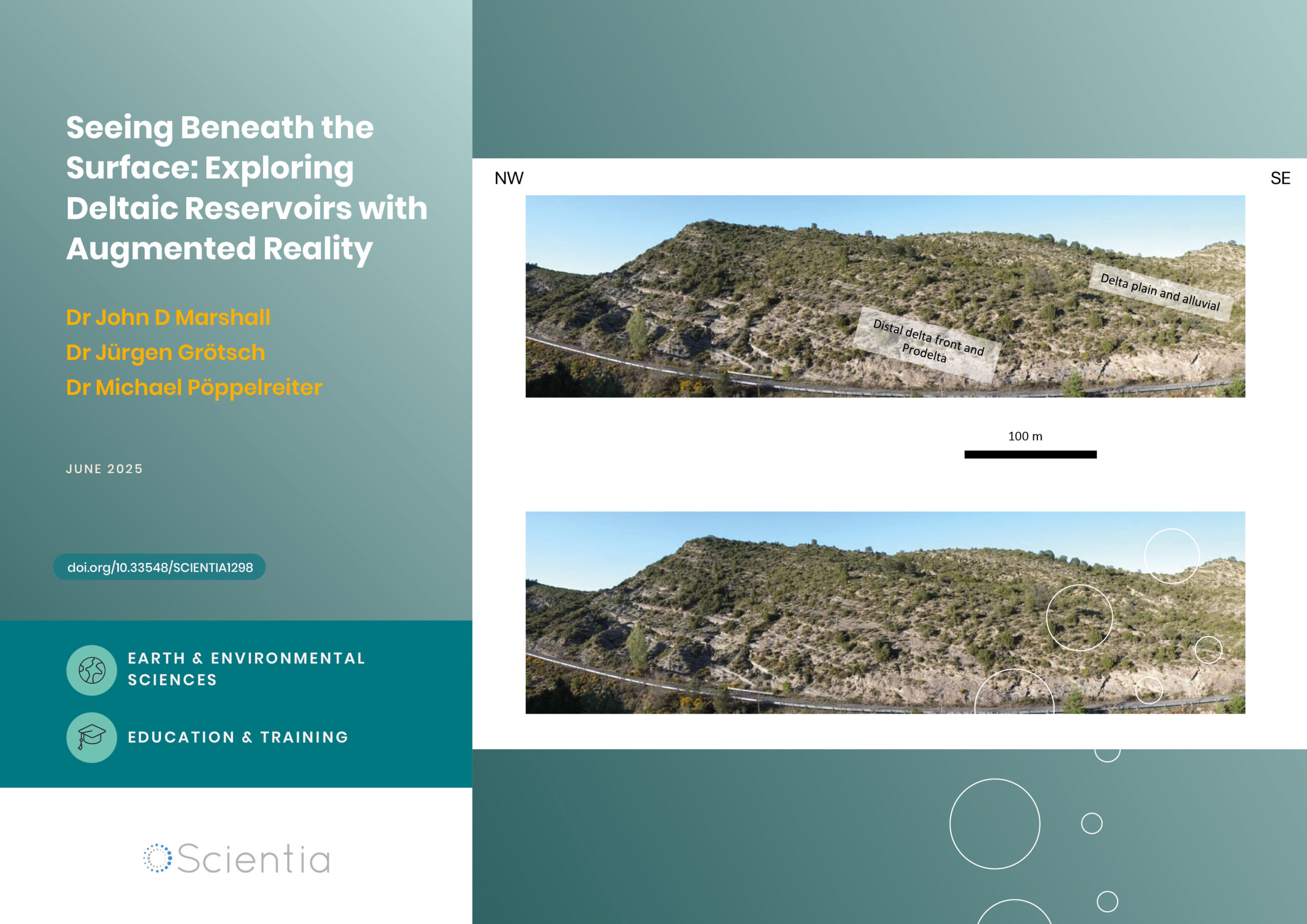Dr Sylvie Quideau – Investigating Carbon Storage and Stability in Boreal Forest Soils
The world’s boreal, or high latitude forests, contain around 25% of global terrestrial carbon stores – mostly in their soils. These forest ecosystems are particularly vulnerable to climate change, but the effects that rising temperatures could have on their carbon stocks are poorly understood. Dr Sylvie Quideau and her team from the University of Alberta have been studying the complex interactions involved in the storage and stability of boreal soil carbon. Their work will help to inform management and conservation decisions, with implications for global climate change mitigation.
An Under-appreciated Carbon Store
Boreal forests are the world’s most northerly woodlands – encircling the globe just south of the Arctic. Forming the largest terrestrial community of plants and animals on Earth, boreal forests are characterised mainly by coniferous tree species, and experience freezing temperatures for six to eight months of the year.

These high latitude forests are one of the most vulnerable ecosystems to global warming. While global surface temperatures are projected to rise by 1.8–4°C by 2100, northern regions may experience up to 5°C warming. Such large increases in average temperatures are expected to lead to altered patterns of freeze and thaw, and transformative vegetation shifts in the boreal forest zone.
Boreal forests also represent a huge, but often under-acknowledged, global carbon store. Carbon stocks in boreal forests are estimated at 471 gigatons – close to 25% of the total amount of carbon stored in terrestrial ecosystems worldwide. Boreal forest carbon stocks consist of a complex mixture of carbon pools, with more than 85% of carbon being stored in the soil rather than the vegetation.
Carbon is stored in forest soils primarily in the form of soil organic matter. Organic matter accumulation in soils reflects the influence of several environmental soil forming factors including climate, vegetation and parent geological material. These stores of soil carbon have varying turnover rates along a continuum ranging from days (termed labile carbon), to decades, and centuries (persistent carbon). The different types of carbon pools and timescales over which they cycle make it challenging to predict the response of boreal soil carbon to climate change.
With boreal forest soils representing such large carbon storehouses, any changes in these stocks could significantly affect the global carbon cycle. Yet despite the importance of boreal forest soils to the global carbon budget and their high susceptibility to climate change, very little is known about how warming will affect carbon stocks and dynamics in these soils.
Dr Sylvie Quideau and her team from the University of Alberta are seeking to address this issue, with a research program that investigates how underlying environmental factors control soil carbon storage and stability in boreal forests. ‘We’re interested in deciphering the pathways leading to the formation of organic matter in boreal soils,’ says Dr Quideau. ‘We’re also looking at how the interactions between soil geological material and vegetation may ultimately determine the response of boreal soil carbon to climatic changes.’

Exploring Forest Soil Carbon Dynamics
To gain a better understanding of the carbon cycle in boreal forest soils, Dr Quideau and her team are exploring the sources, formation pathways and stability of carbon pools at a range of different soil depths within the forest. They have included a variety of boreal forests from across Canada in their research – allowing for characterisation of soil organic matter from a wide range of geological materials, forest stand types and climate.
Their program combines a field-based study of soils in the natural environment, isotope-labelling experiments in controlled-environment chambers, and state-of-the-art analytical protocols. The team is using the latest technological and methodological advances to follow the fate of individual plant molecules through biological communities in the soil, to the soil carbon pools.
Deep soil carbon (below 20 centimetres) represents more than half of the total carbon stored in soils globally. However, less is known about carbon storage in the deep soils of boreal forests than in surface soils, and the mechanisms responsible for its accumulation and persistence are largely unknown.
Dr Quideau’s team hypothesises that the parent geological material is the primary driver of differences among soils, and controls the persistence of deep soil carbon. ‘Soil carbon age increases with depth,’ says Dr Quideau. ‘However, deep carbon may not be as stable as originally thought, and new evidence suggests that carbon fluxes in deep soil may be as large as those at the soil surface. We are investigating how soil geological material and the processes leading to soil formation may control the source and stability of carbon present at depth.’
Research carried out so far has led Dr Quideau’s team to believe that the carbon pool in surface soil may actually be more chemically stable than deep soil carbon. At low temperatures and in the absence of disturbances, thick forest floors accumulate in boreal forests. Carbon in this layer can be preserved for decades and even centuries in the deeper surface layers. Carbon accumulation in the forest floor varies with vegetation composition, although greater carbon stocks do not necessarily mean greater carbon stability. However, there is an emerging consensus that sensitivity to temperature increases with greater levels of organic matter decomposition or humification.
‘Humified forest floors may therefore be more vulnerable to temperature increases than fresh litter,’ explains Dr Quideau. ‘However, our predictions need to take into account changes in microbial community composition with warming.’
This uncertainty over the impacts of environmental change on microbial communities has led the team to investigate whether vegetation shifts will result in changes to both the composition of soil biological communities and the pathways involved in organic matter breakdown, with consequential implications for carbon persistence. Microorganisms are considered to be the ‘eye of the needle’ through which most soil carbon passes, so how they are affected by climate change is critical to the overall soil carbon response.
Another significant carbon store being investigated by Dr Quideau and her team is the root zone, or rhizosphere. This is a unique zone, where the secretion of organic substances by plant roots maintains a continuous supply of ‘food’ for microbes. This can lead to priming – an increase in surrounding soil carbon decomposition.
‘Linkages between plants and microbes are both complex and central to soil functioning,’ explains Dr Quideau. ‘In order to truly understand the vulnerability of boreal soil carbon to change, these relationships must be explored.’ The team is therefore investigating whether soil microbial activity is more sensitive to climate-induced changes in the substances secreted by roots, than to climatic changes themselves. ‘These indirect effects of climate change may be more important than direct climatic effects,’ says Dr Quideau. ‘If our hypotheses are correct, the response of the microbial community to variations in temperature will be greater in the rhizosphere than in the bulk soils.’

Future Management of Boreal Forests
Boreal forests are expected to face large temperature increases in the next century, compared with other ecosystems. Northward migration of the entire boreal ecosystem is predicted, and within the main boreal forest, deciduous trees will replace evergreens. Forest composition will also shift to younger trees due to increased wildfires.
The work of Dr Quideau and her team is therefore critical in evaluating the vulnerability of boreal soil carbon to vegetation shifts, in order to improve prediction of the entire boreal ecosystem response to global climate change. The results will also improve the accuracy of global soil carbon projections in Earth system models, which are currently lacking in their simulations of microbial processes. By incorporating the data and findings from this program, the accuracy of these models should increase significantly.
Dr Quideau’s team is also carrying out work exploring the long-term effects of harvest on boreal soils and their carbon storage. Forestry is an important feature of Canada’s economy, but there is still considerable uncertainty on how management practices will affect boreal soil carbon storage in the long term. With increasing pressures from a changing climate and intensified forest management, developing better tools and methods for quantifying soil carbon dynamics is of particular importance.
Using remote sensing techniques, the researchers have found differences in carbon retention between harvested and unharvested conifer or deciduous plantations based on site wetness. This work, combined with an improved understanding of the forest soil carbon cycle, is of direct economic importance to the forestry sector. Indeed, the team’s findings are beginning to inform and improve sustainable and adaptive management strategies for Canadian boreal forests.
Another distinct, but related area of interest to the team is the impact of invasive earthworms on carbon cycling in boreal soils. Canada’s boreal forests had been largely earthworm-free since the Ice Age 10,000 years ago, and evolved in their absence. However, invasive earthworm species, introduced to the continent by European settlers centuries ago, are now making their way into northern boreal forests.
Earthworm activity represents a significant change to forest carbon dynamics, and needs to be incorporated into the overall carbon budget for boreal forests. However, there is a lack of understanding of their long-term impact. The researchers have been quantifying soil carbon stocks and persistence, soil development and microbial communities of invaded and pristine sites of similar soil type and vegetation, in order to improve understanding of earthworm influence on carbon storage.
Preliminary results show a significant reduction of the forest floor associated with an increase in carbon content for the uppermost mineral soil layers. This work also demonstrates the importance of investigating interactive and cumulative effects of multiple disturbances, such as harvesting, forest fires and earthworms, on the carbon balance within boreal forest soils.
Overall, the results of the team’s current and future work will provide an unprecedented characterisation of organic matter transformation pathways in boreal forests, which should fundamentally advance our understanding of carbon accumulation and persistence in boreal soils. Dr Quideau believes that these integrated research programs will establish the foundational scientific knowledge required to improve predictions of boreal soil carbon responses to climate change – in turn informing management and adaptation strategies that are tailor-made for sustaining boreal forest ecosystems.
Reference
https://doi.org/10.33548/SCIENTIA508
Meet the researcher

Dr Sylvie Quideau
Department of Renewable Resources
Faculty of Agricultural Life and Environmental Sciences
University of Alberta
Edmonton, Alberta
Canada
Dr Sylvie Quideau is a soil biogeochemist with a special interest in carbon fluxes and organic matter processes. After studying for her MSc in Advanced Chemical Technology at the University of Manchester, Dr Quideau gained a PhD in Soil Science from the University of Wisconsin. She is now based at the University of Alberta, where she is a Professor in the Department of Renewable Resources. The focus of Dr Quideau’s research is on quantifying the underlying environmental factors controlling organic matter accumulation and distribution in soils, relating measurable organic matter quality indices to ecosystem function and predicating the response of soils to natural and human disturbance. Her research group studies soil organic matter chemistry and biodiversity in Canadian boreal forests. The group is also looking at quantifying carbon and nitrogen fluxes in reclaimed soils, soil carbon retention following land conversion, and the influence of earthworm invasion and fire regimes on forested soils.
CONTACT
E: sylvie.quideau@ualberta.ca
W: https://www.ualberta.ca/agriculture-life-environment-sciences/about-us/contact-us/facultylecturer-directory/sylvie-a-mercier-quideau
W: https://soilbgc.wordpress.com/
KEY COLLABORATORS
Charlotte Norris, Natural Resources Canada
Frédéric Rees, French National Institute for Agriculture, Food, and Environment
Mathew Swallow, Mount Royal University
Justine Lejoly, University of Alberta
Miles Dyck, University of Alberta
Ellen Macdonald, University of Alberta
FUNDING
Natural Sciences and Engineering Research Council of Canada (NSERC)
FURTHER READING
PD Sewell, SA Quideau, M Dyck, E Macdonald, Long-term effects of harvest on boreal forest soils in relation to a remote sensing-based soil moisture index, Forest Ecology and Management, 2020, 462, 117986.
J Lejoly, S Quideau, J Laganiere, Non-native earthworms in the boreal forest: implications for soil carbon storage, AGU Fall Meeting Abstracts, 2019, B23H-2524.
S Quideau, F Rees, F Blau, N Belanger, Organic carbon stability in Podzolic and Luvisolic subsoils, Geophysical Research Abstracts, 2018, 20.
CE Norris, SA Quideau, JS Bhatti, RE Wasylishen, Soil carbon stabilisation in jack pine stands along the Boreal Forest Transect Case Study, Global Change Biology, 2011, 17, 480.

Creative Commons Licence
(CC BY 4.0)
This work is licensed under a Creative Commons Attribution 4.0 International License. 
What does this mean?
Share: You can copy and redistribute the material in any medium or format
Adapt: You can change, and build upon the material for any purpose, even commercially.
Credit: You must give appropriate credit, provide a link to the license, and indicate if changes were made.
More articles you may like
How Food Environments Shape Our Eating Habits
How we eat dramatically impacts our health, yet millions of Americans live in ‘food deserts’ – areas with limited access to fresh, nutritious food. Recent research reveals that solving this crisis requires looking beyond just physical access to food to understand how our entire community environment shapes our dietary choices. Through a series of pioneering studies, Dr Terrence Thomas and colleagues at North Carolina A&T State University have been investigating how different aspects of our food environment influence what we put on our plates. Their findings suggest that creating lasting change requires reimagining how communities engage with food at every level.
Probing Electron Dynamics in the Ultrafast Regime
In the atoms that make up the matter around us, negatively charged particles called electrons have properties such as spin and orbital angular momentum. Researchers at Martin Luther University Halle-Wittenberg have developed a theoretical framework which allows them to simulate the dynamics of the spin and orbital angular momentum of electrons in materials when probed with an ultrafast laser pulse. Using this framework, they are able to simulate different materials and improve our understanding of dynamics on an atomic scale.
Seeing Beneath the Surface: Exploring Deltaic Reservoirs with Augmented Reality
In the Aínsa Basin of the Spanish Pyrenees, the Mondot-1 well was drilled, cored, and fully logged to capture a detailed record of a long-buried ancient river delta system. Dr. John D. Marshall, Dr. Jürgen Grötsch, and Dr. Michael C. Pöppelreiter with co-workers at Shell International used this core to trace how sediments once flowed across the landscape, and were deposited under shifting tectonic conditions. The team employed augmented reality and interactive virtual displays; these innovative tools offer new ways to explore subsurface depositional systems, and are particularly useful in locations where physical access to the core is difficult, or no longer possible.
Dr Jim Wu | Ziresovir Offers New Hope for Treating Respiratory Syncytial Virus Infections
Respiratory syncytial virus (RSV) causes respiratory tract infections in children and adults. While for many patients the outcomes of infection are mild, for others, infection can prove fatal, and there is a lack of effective treatments. Dr Jim Wu from the Shanghai Ark Biopharmaceutical Company in China carries out his vital research to develop new, safe, and effective treatments to tackle this killer.




